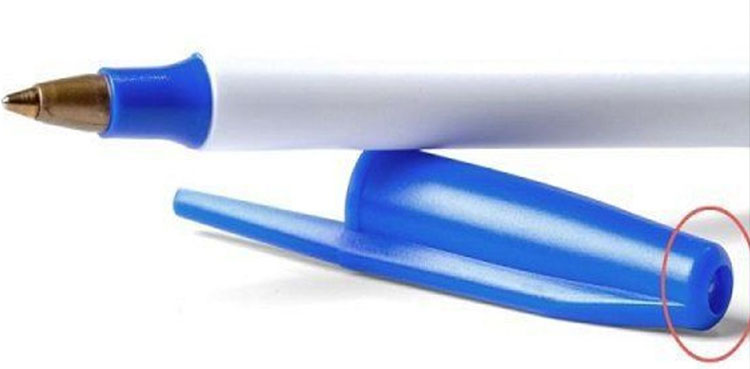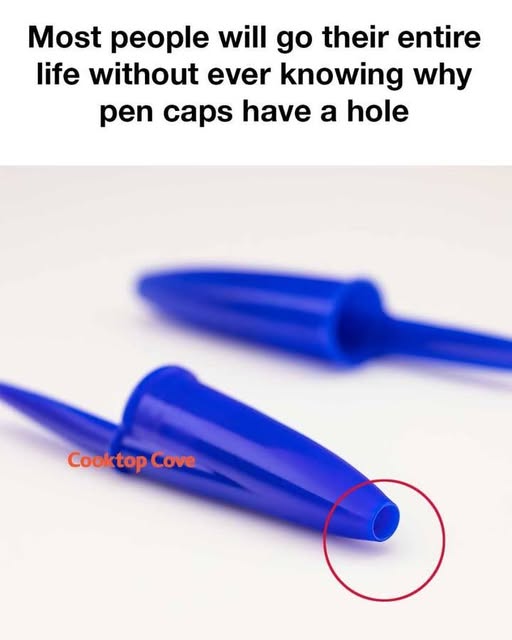If you’ve ever looked closely at a pen, you may have noticed a tiny hole at the top of its cap. While it seems like a minor design feature, it actually serves a very important purpose, and understanding why it exists can help you appreciate the thought that goes into everyday objects.
A Safety Feature
The most critical reason pen caps have a hole is safety. The hole is designed to prevent choking hazards. Children, and sometimes adults, might accidentally swallow a pen cap. Without the hole, the cap could block the airway completely, which is extremely dangerous. The small hole allows air to pass through if someone accidentally swallows the cap, increasing the chance of survival until help arrives. Safety experts and manufacturers have implemented this feature to reduce the risk of fatal accidents, making pens safer for use in schools and homes.

Airflow and Pressure Regulation
Another reason for the hole relates to airflow. Some pens, particularly felt-tip or gel pens, are sensitive to pressure changes. The hole allows air to enter or exit the cap, preventing the buildup of pressure that could cause ink to leak or splatter. This small adjustment keeps the pen functioning properly and prevents messy accidents, especially when storing pens in bags, pockets, or pencil cases.
Preventing Ink Drying
While it might not seem obvious, the hole also helps with ink preservation. Caps are designed to create a seal around the pen tip, but in combination with airflow, the hole reduces the risk of vacuum formation inside the cap. A vacuum could either pull ink out or make it harder to recap the pen. By allowing just a bit of air to pass through, pen manufacturers ensure that the pen tip remains fresh and ready to write.
A Design Consideration
Interestingly, the hole also reflects a smart design principle: making small, invisible improvements that enhance safety and usability. Most people don’t consciously notice the hole, but it quietly prevents accidents and helps maintain the pen’s performance. It’s an example of how everyday items often have hidden features that are the result of careful engineering.
Regulatory Standards
In many countries, pen caps are required to have holes to comply with regulatory safety standards. These rules are especially strict for products aimed at children. Schools and toy safety authorities enforce these regulations to ensure that even small office supplies minimize risks of choking or suffocation. As a result, most pens you encounter today, from high-end fountain pens to simple ballpoints, feature this tiny but crucial hole.

Conclusion
The small hole on a pen cap may seem trivial, but it’s a vital safety and functional feature. It prevents choking hazards, regulates airflow, preserves ink, and reflects thoughtful design. Next time you pick up a pen, take a closer look—you’ll notice that even the tiniest details in everyday objects often serve an important purpose. Beyond safety and functionality, the hole also symbolizes engineering mindfulness. It reminds us that even simple objects, like pens, are carefully designed to balance usability, performance, and user protection.

















